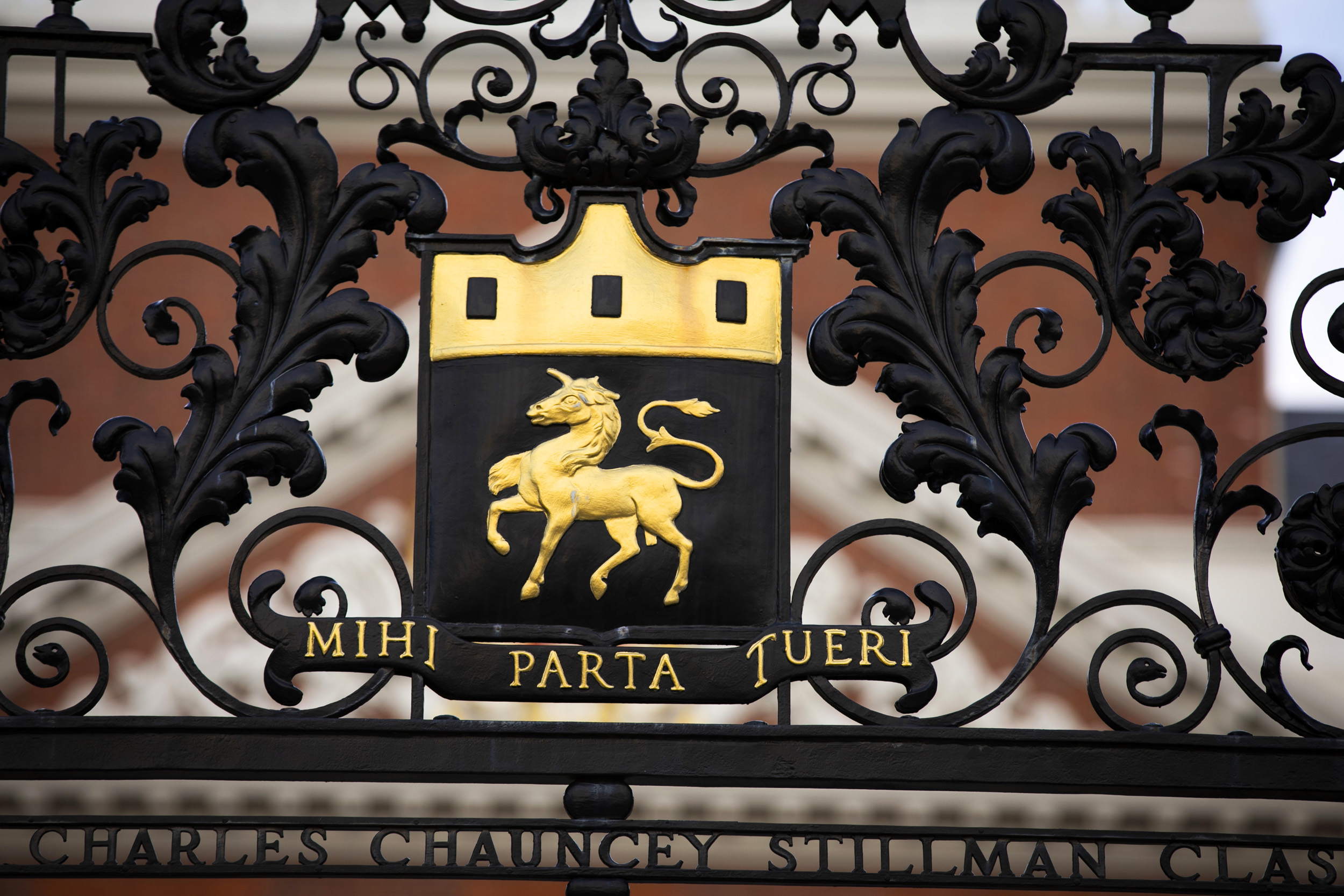Where the wild things are
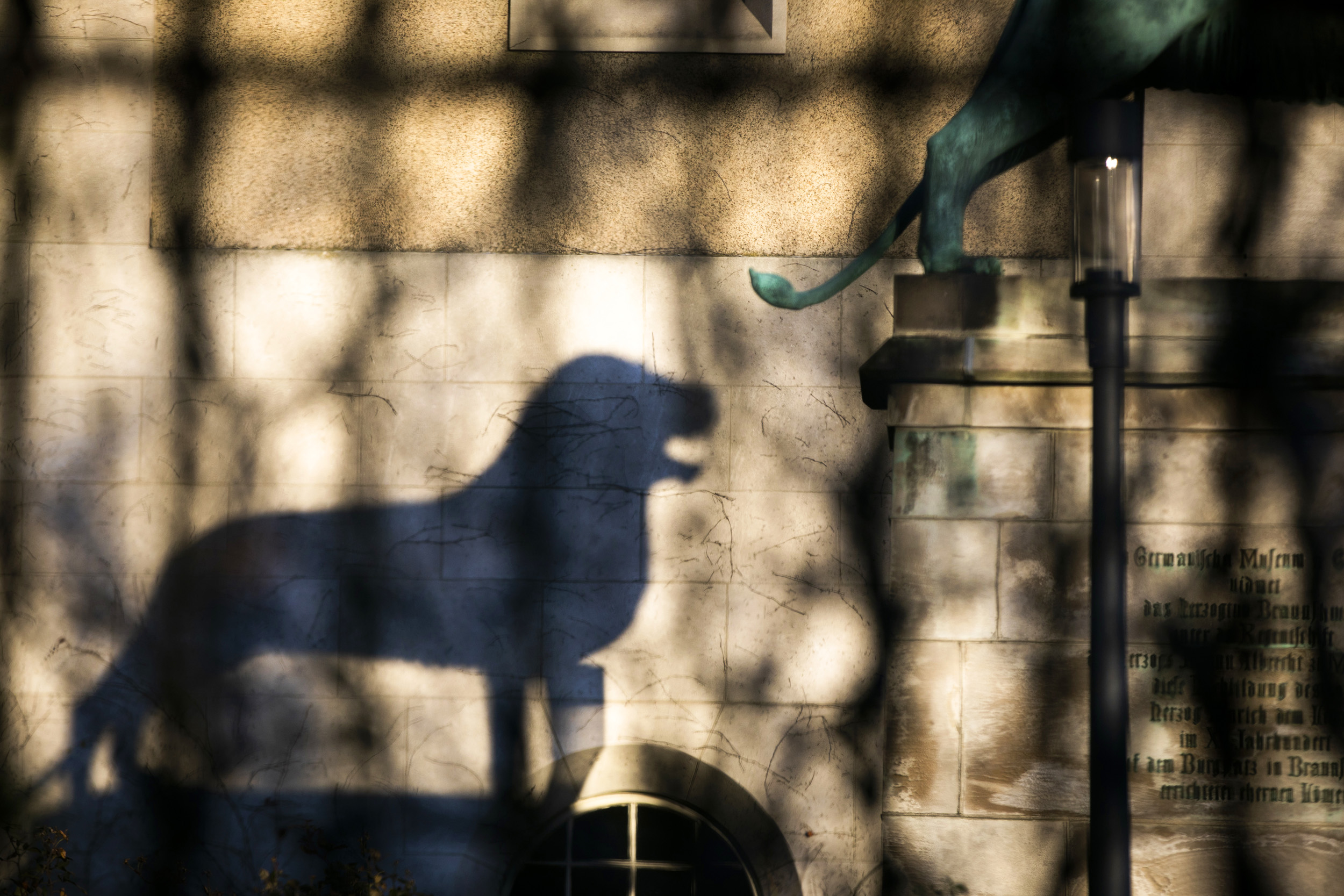
A lion guards the courtyard of Adolphus Busch Hall. The statue is a replica of Braunschweiger Löwe, or Brunswick lion, a cast of the 12th-century bronze from Germany.
Photos by Stephanie Mitchell/Harvard Staff Photographer
Capturing the exotic creatures that grace Harvard’s buildings, gates, and shields
Part of the Photography series
Harvard’s campus and community through the lens of our photographers.
Animal explorers traversing the Harvard campus will encounter curious squirrels in the Yard, flocks of wild turkeys near the residences, and red-tailed hawks hopping from tower to tower.
More exotic creatures lurk everywhere. On building facades, gates, and shields, a closer look reveals a host of nature’s and mythic beasts, from lions to buffalo, from eagles to owls, a famous pair of rhinos, and even a Pegasus and a unicorn.
Most gather close to the Charles River, their source of water, along the perimeter gates, or surround the Bio Labs, near the scientists who study them. The Yard is largely unpopulated, save for the humans guarded under John Harvard’s close watch.
For the New England area, the variety of species is astounding. An inventory reveals such unusual stock as a jaguar, tapir, pelican, iguana, and a giant anteater.
Explore the campus wildlife, where animals are etched and cast in stone, brick, and metal.
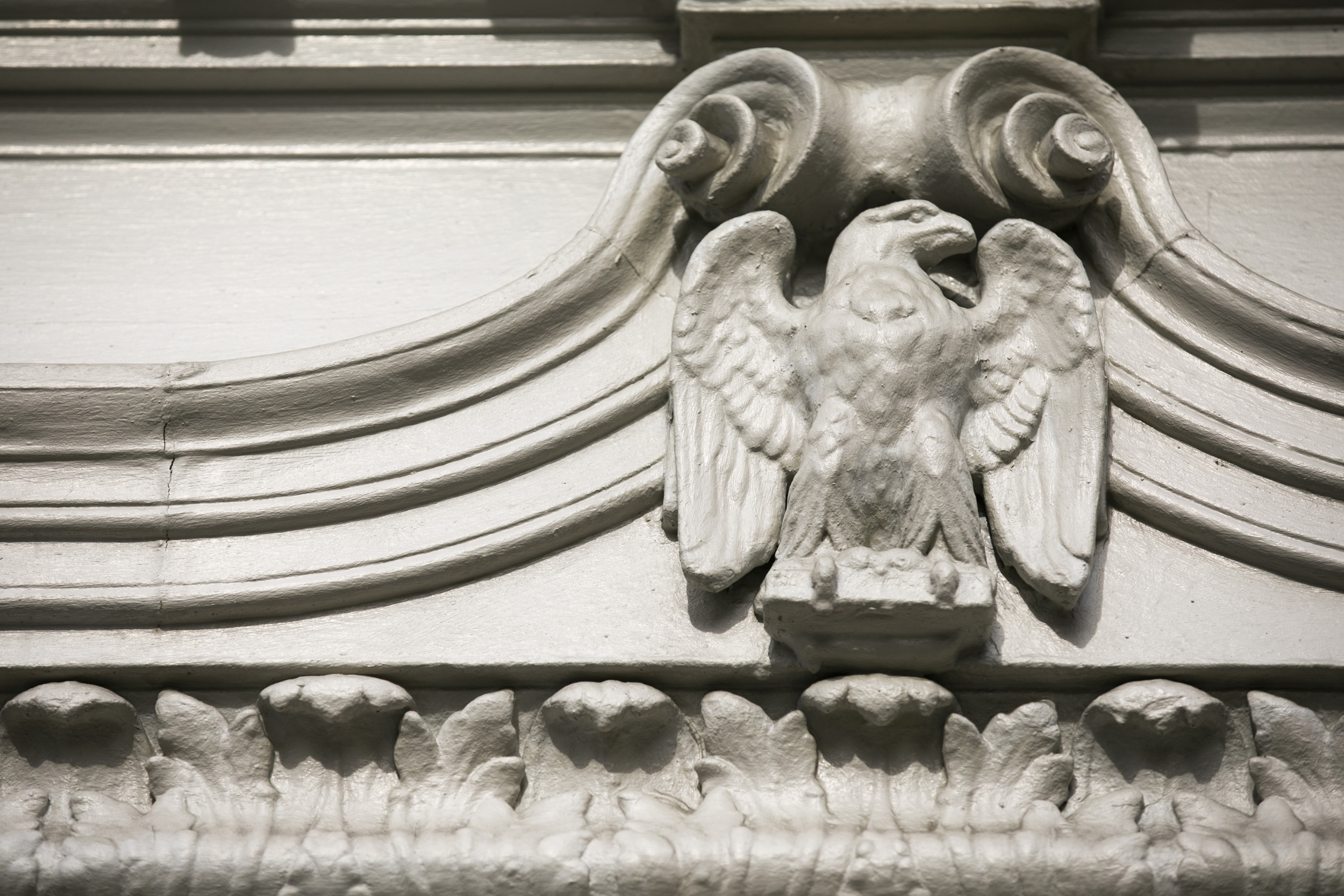
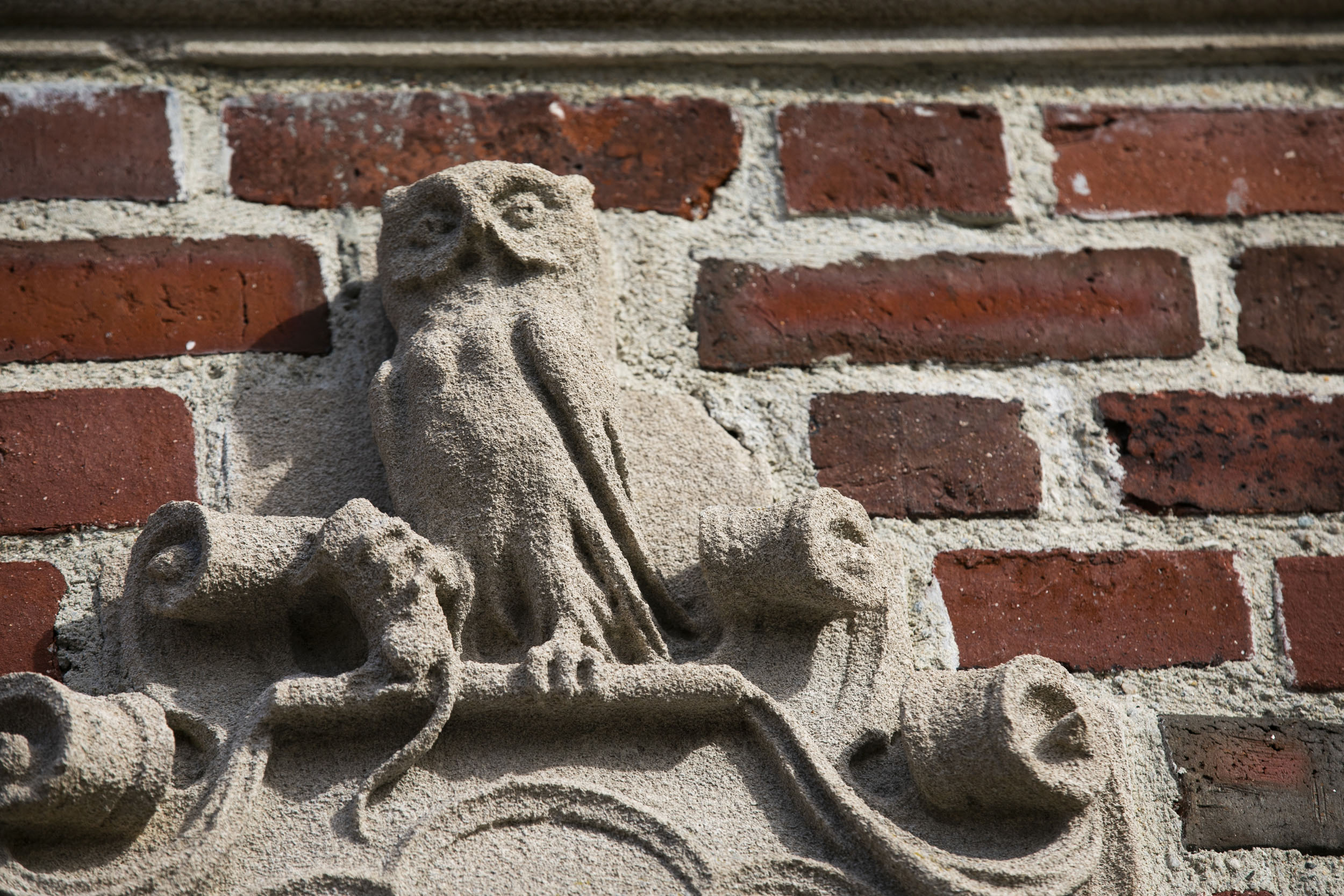

An owl clutches a mouse in its talons while cattle sit on a shield along the gate surrounding the Winthrop House courtyards.

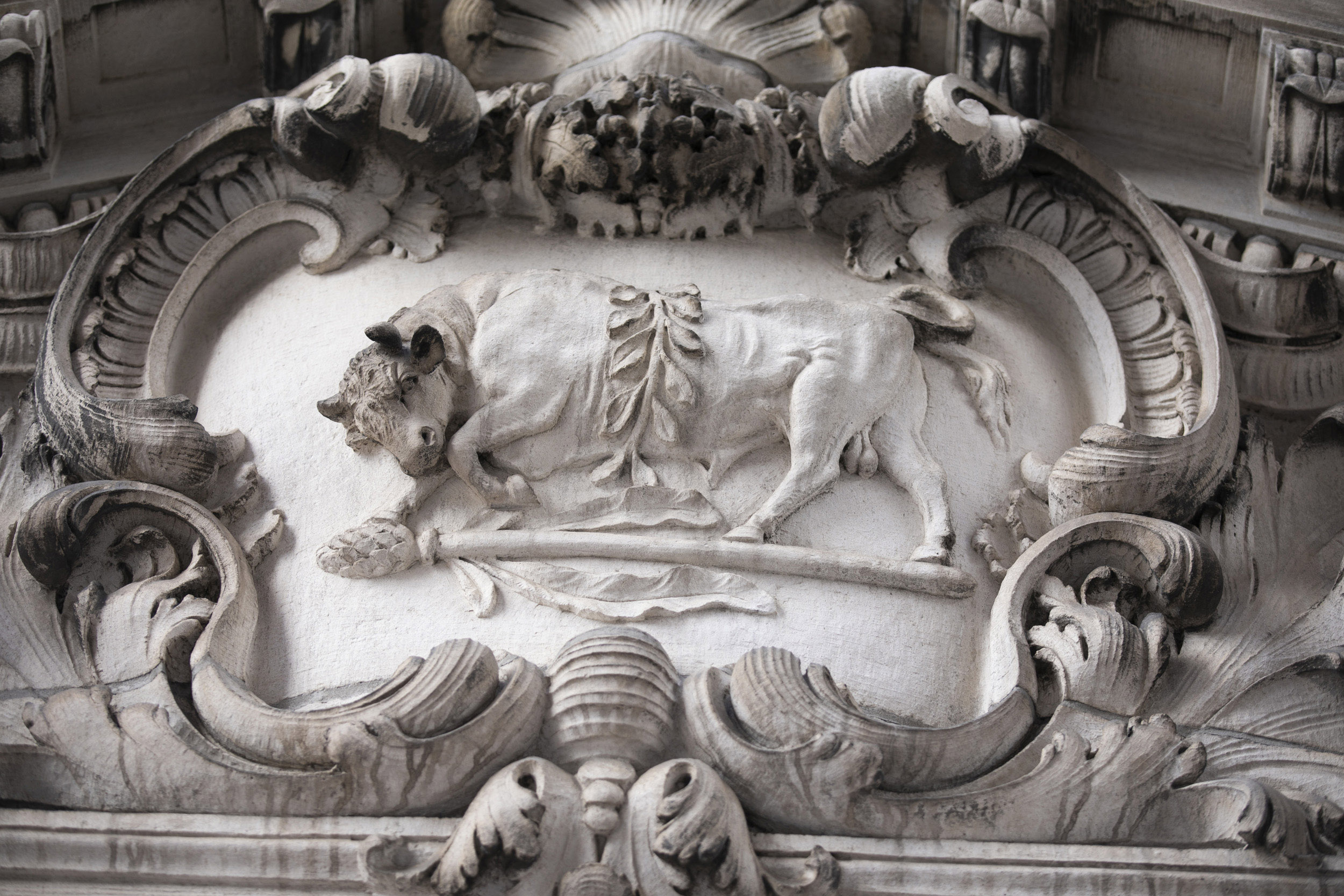
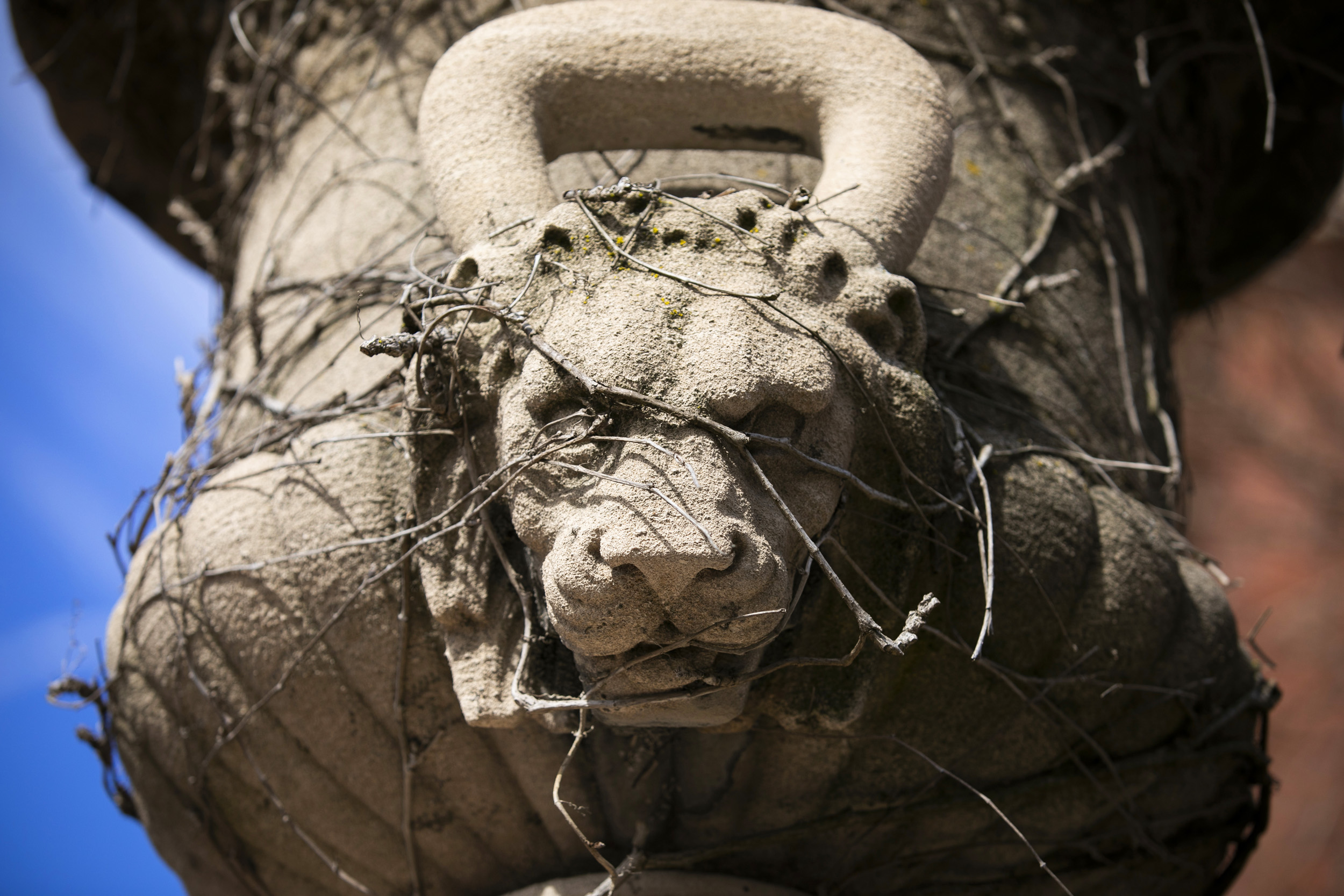
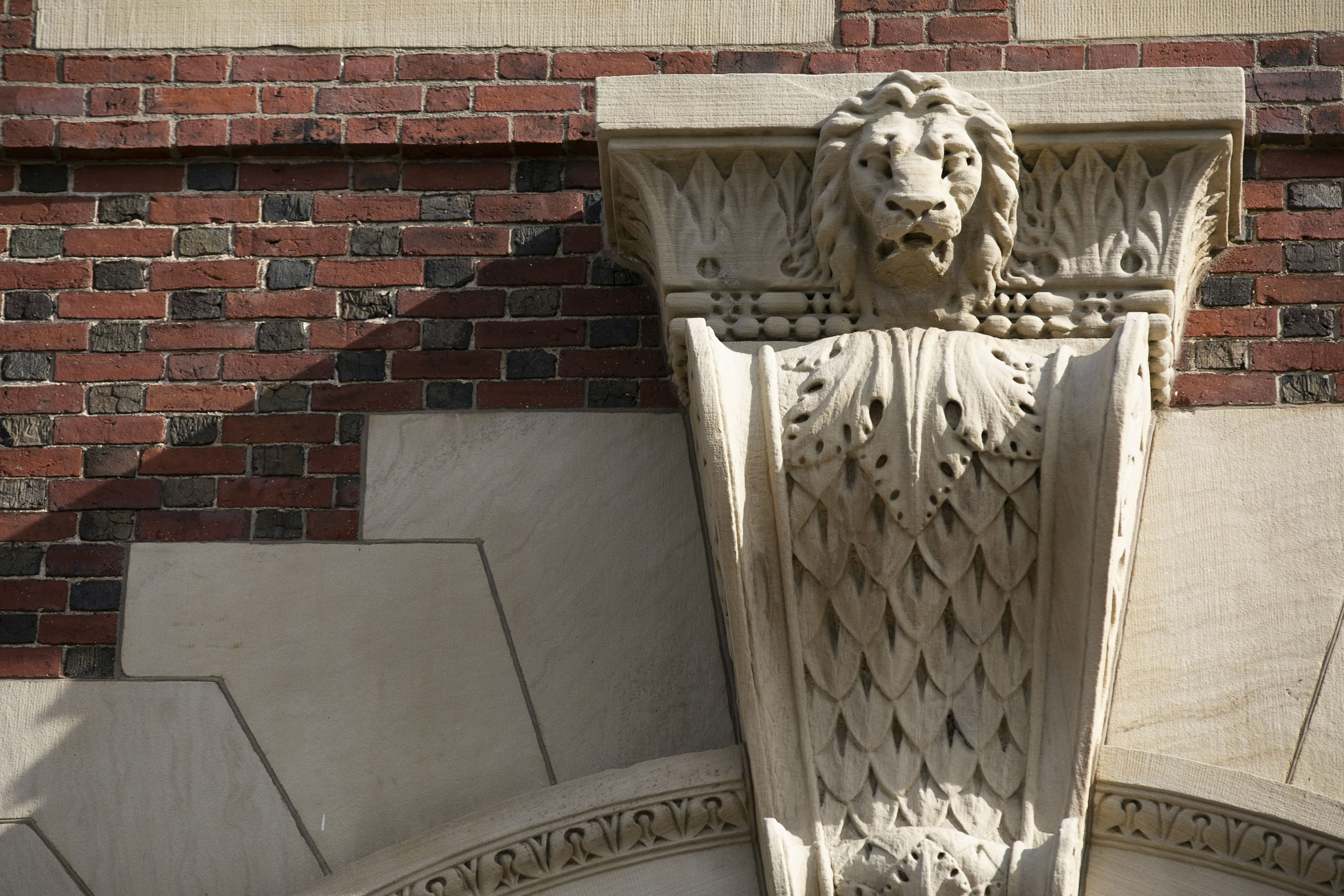
Lions, the most populous of the beasts roaming campus, decorate the gate on Quincy Street and the entrance above Claverly Hall.
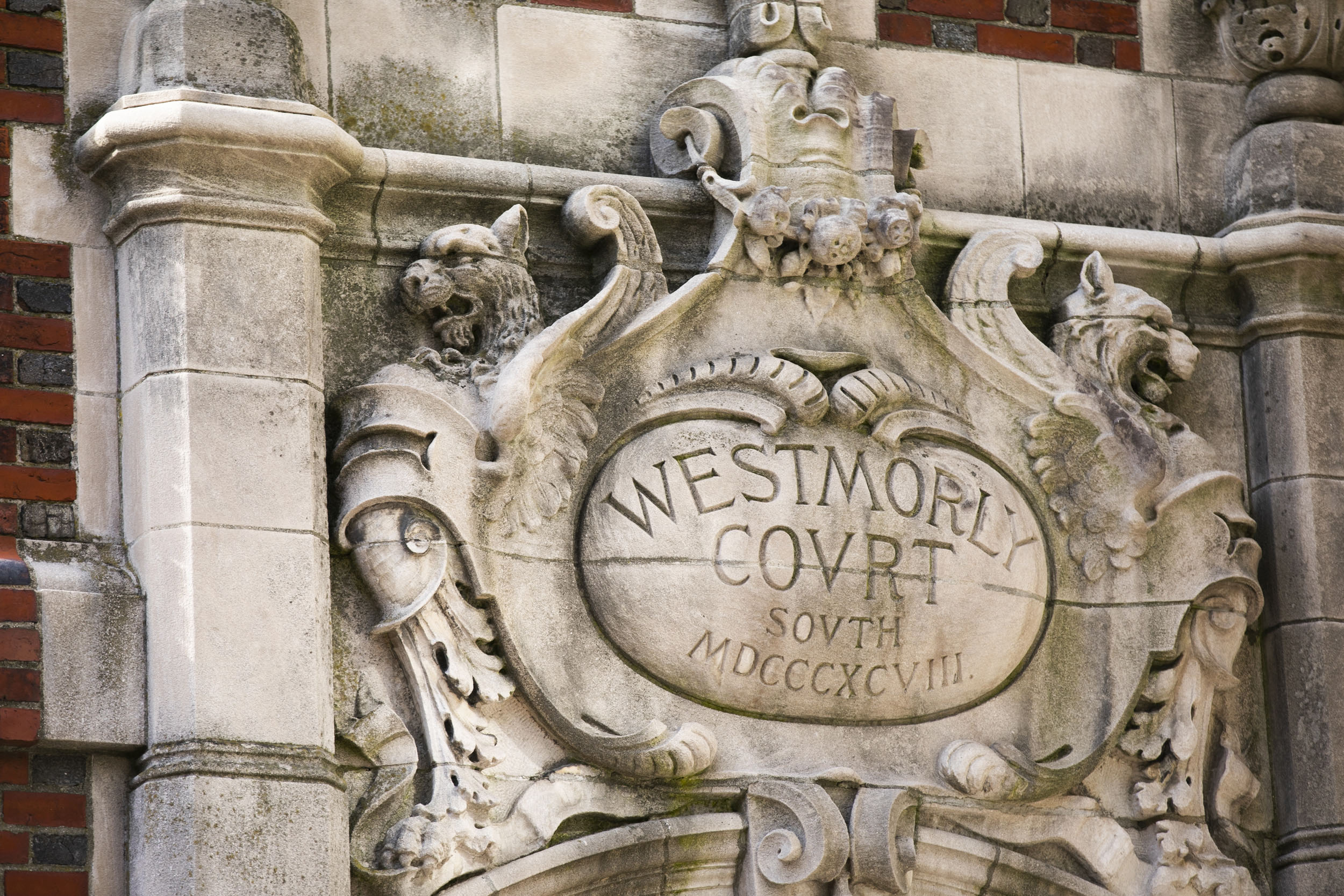
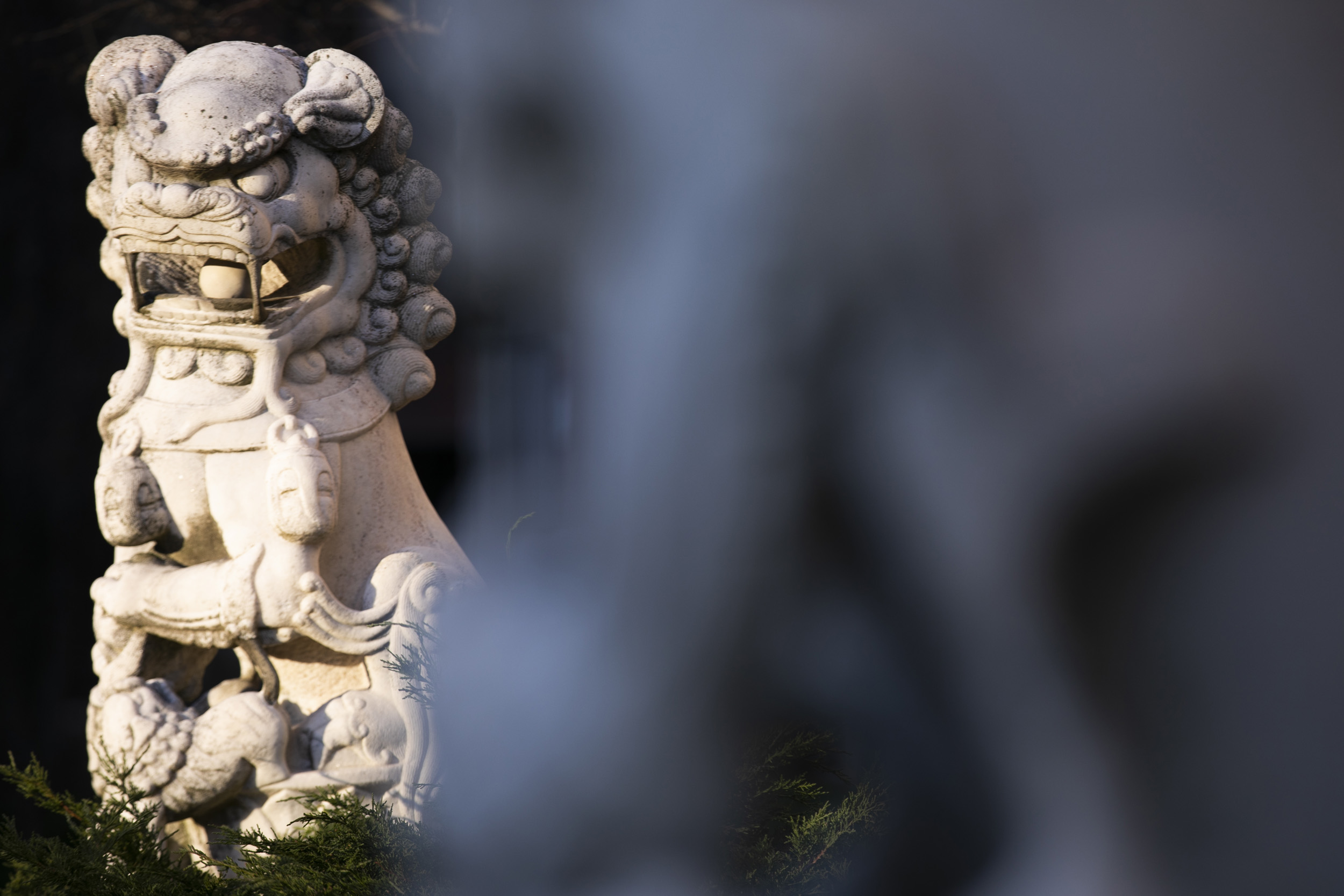
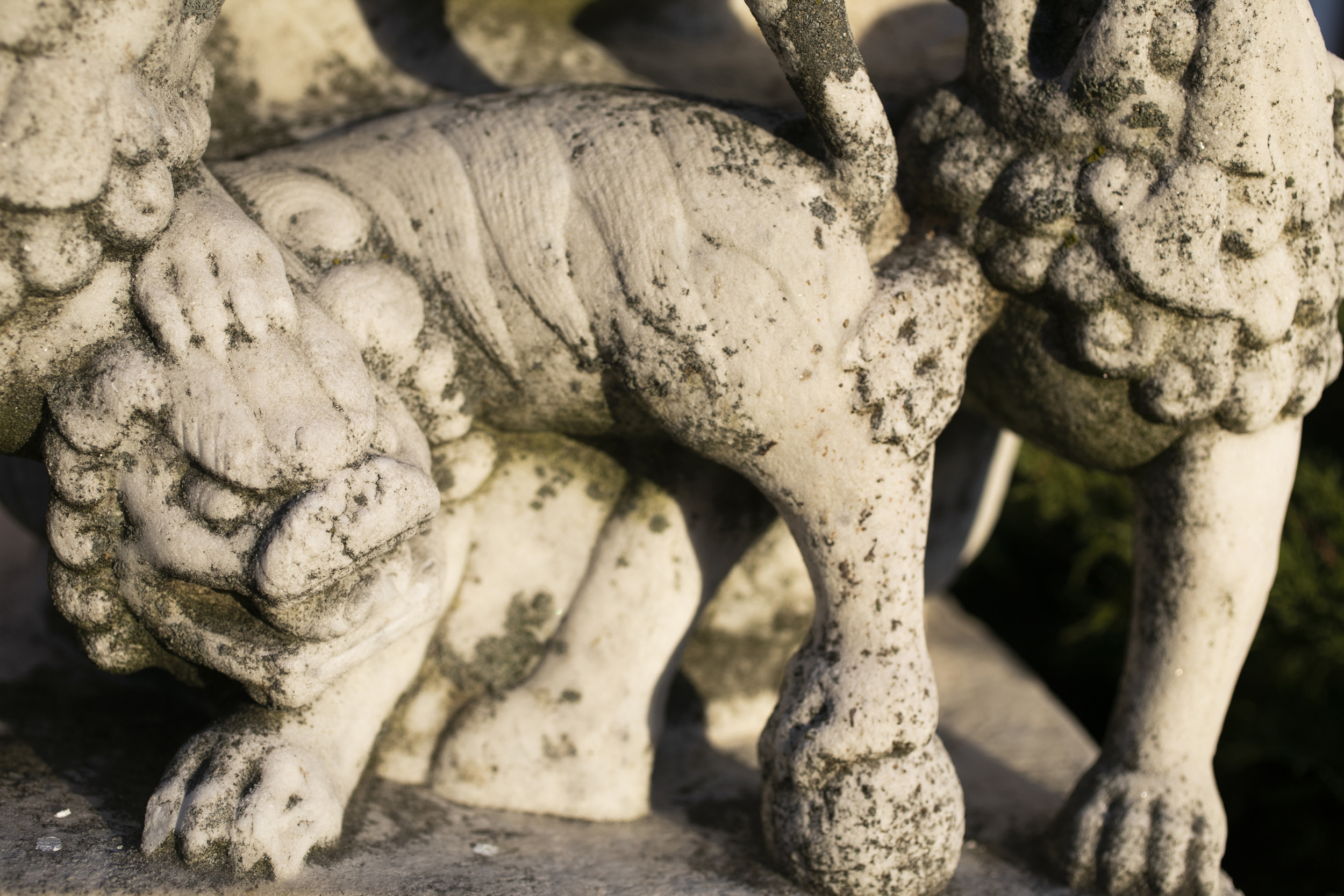
A pair of lions flank the entrance to the Harvard-Yenching Library.
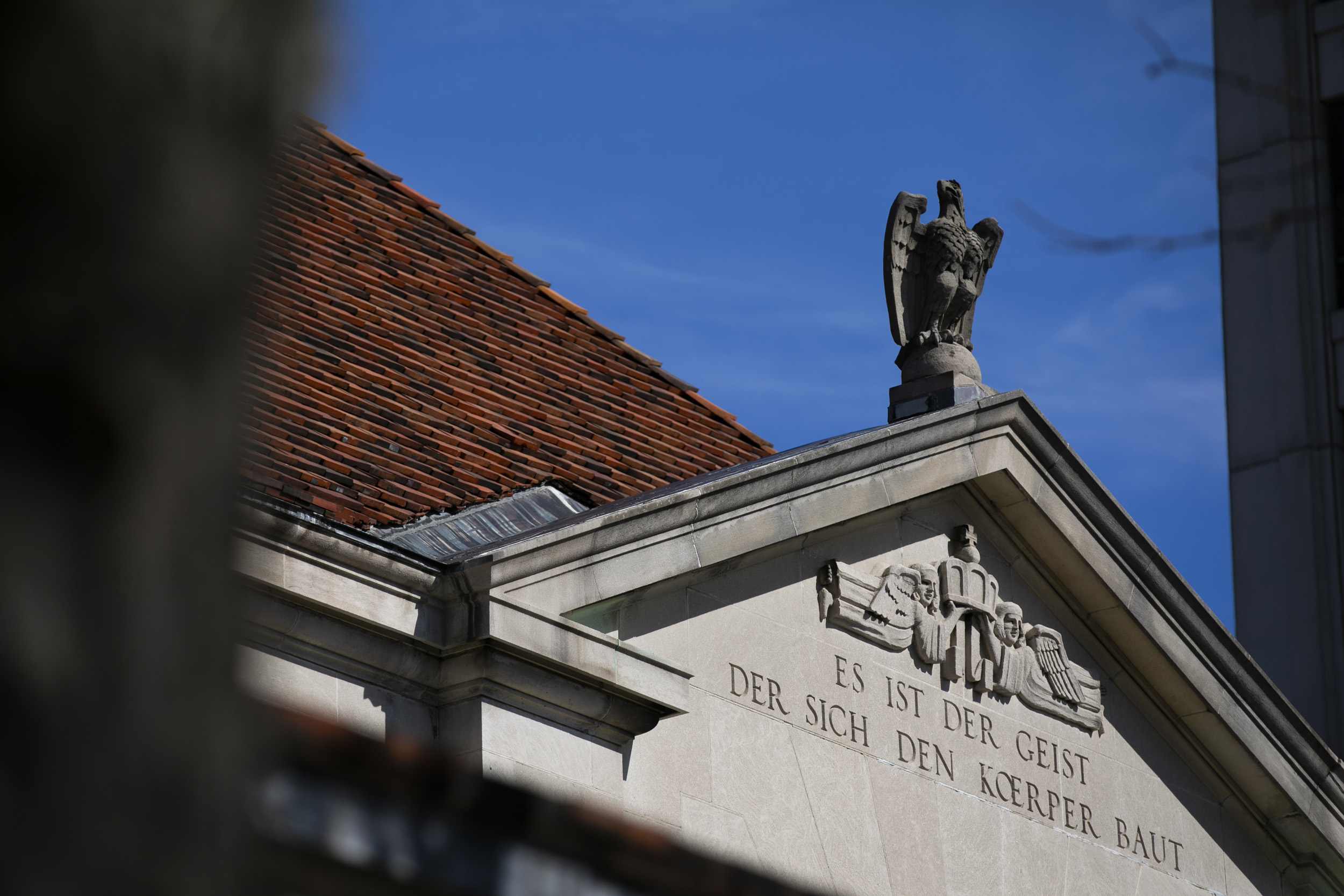

An eagle and a pair of concerned lions adorn Adolphus Busch Hall.
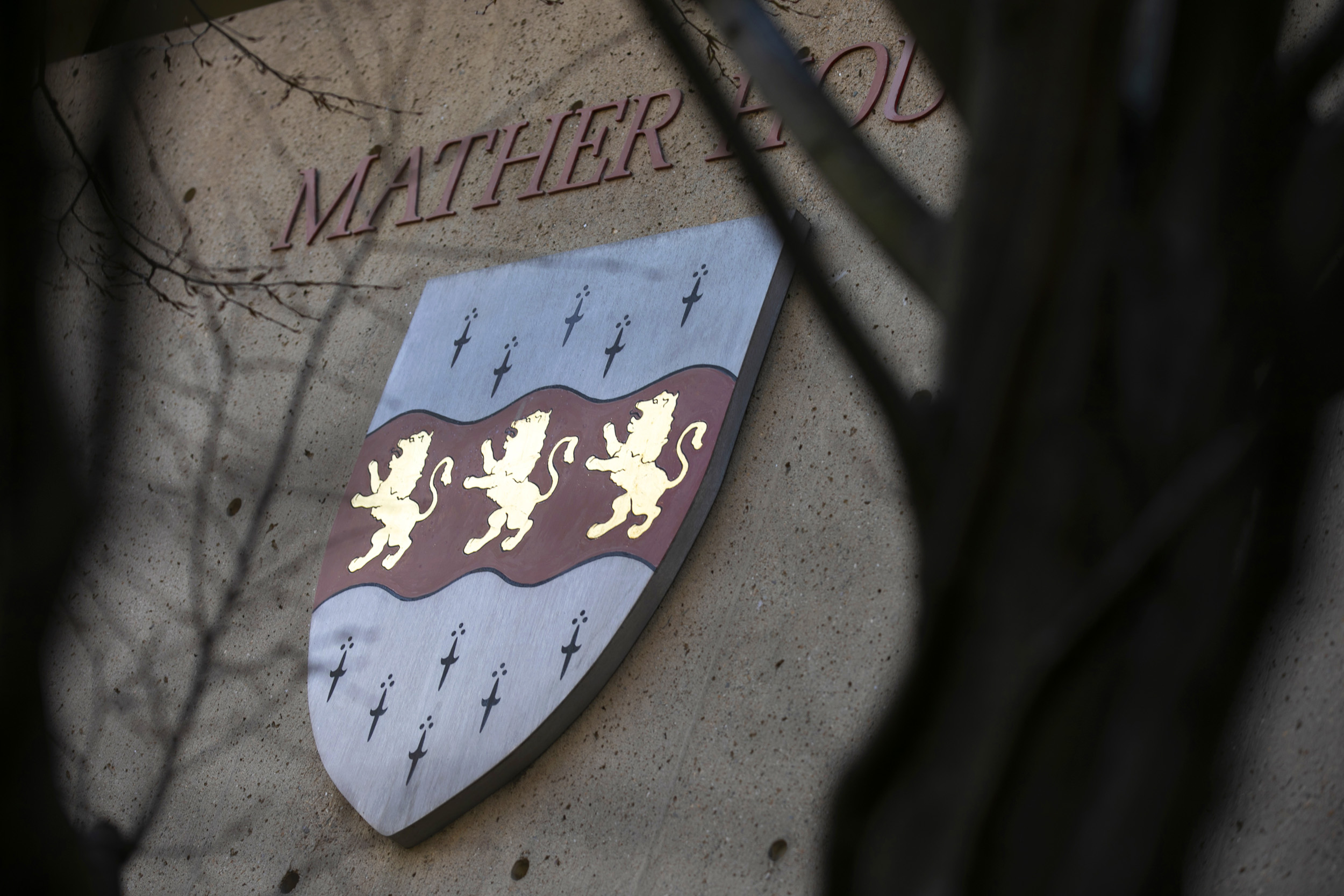
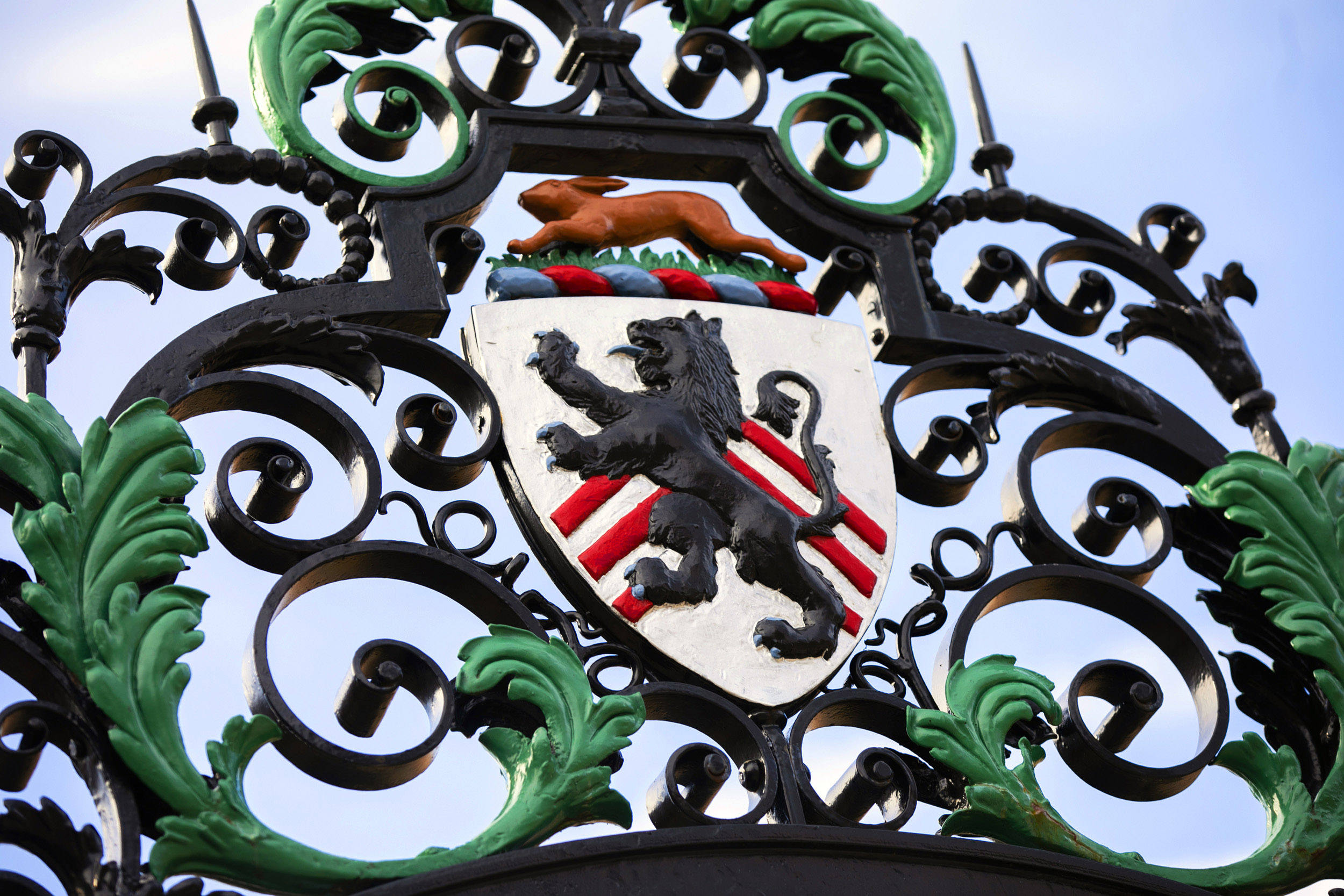

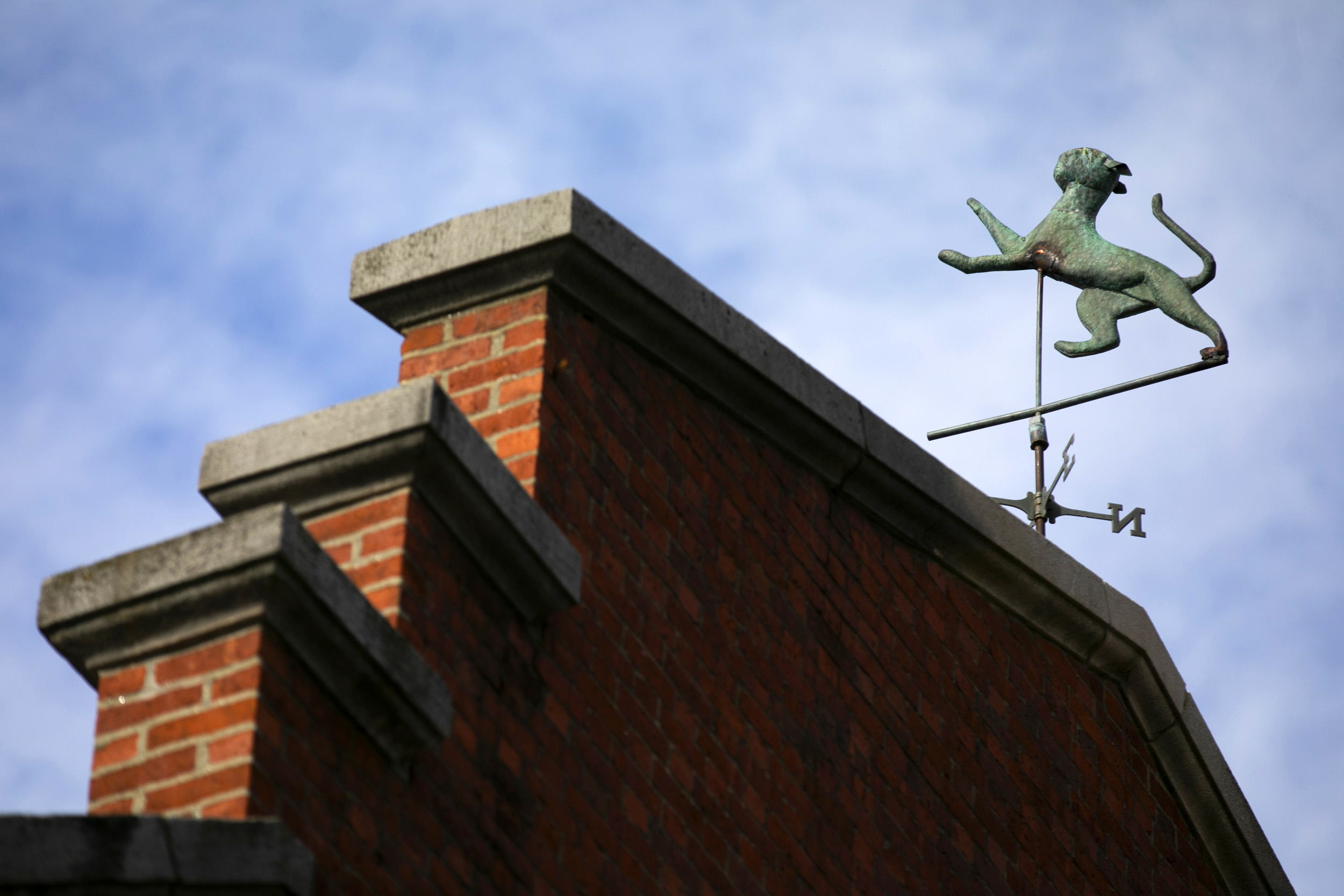
An ibis keeps watch over the Harvard Lampoon building, while across Mount Auburn Street a feline embellishes a weathervane.
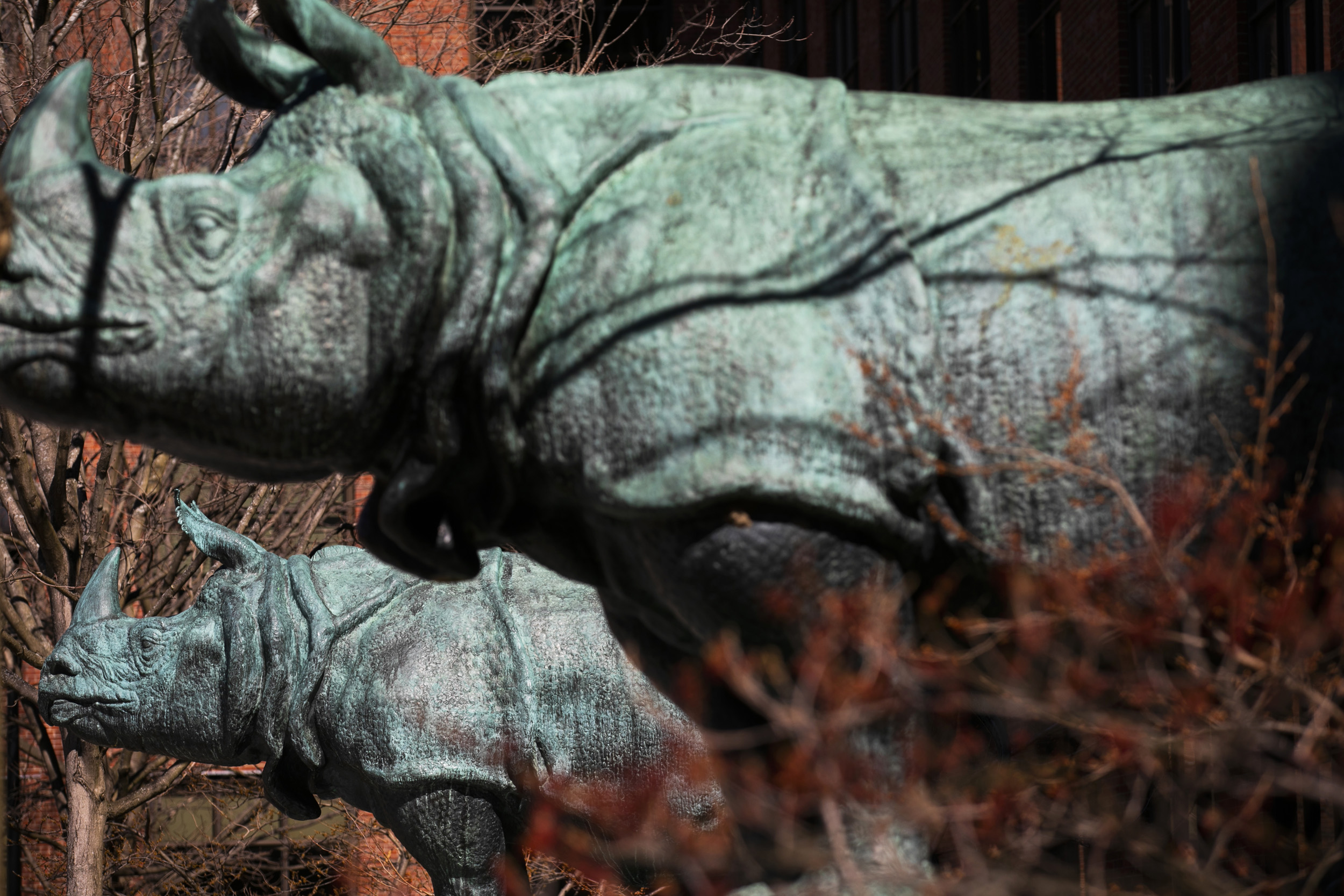
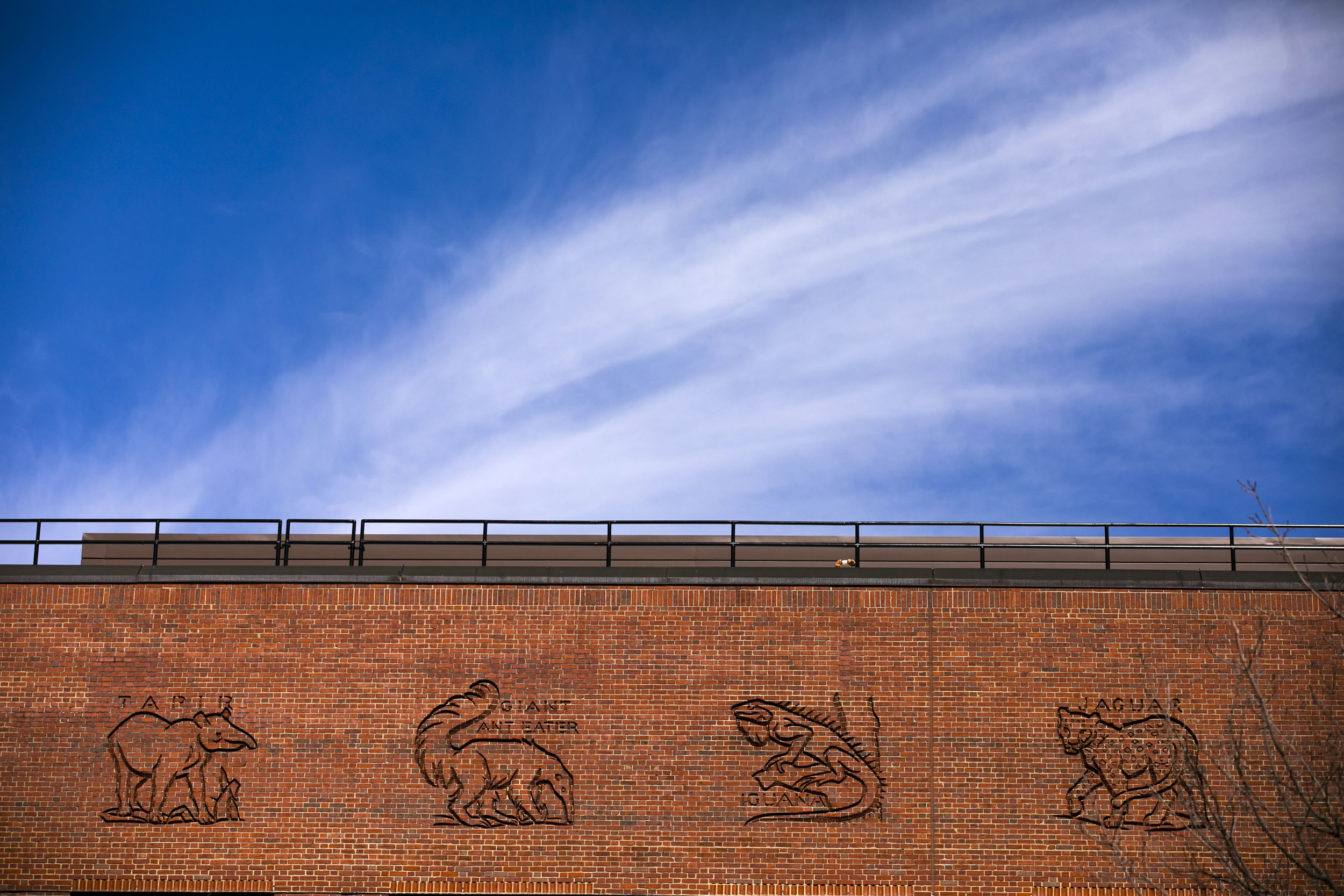
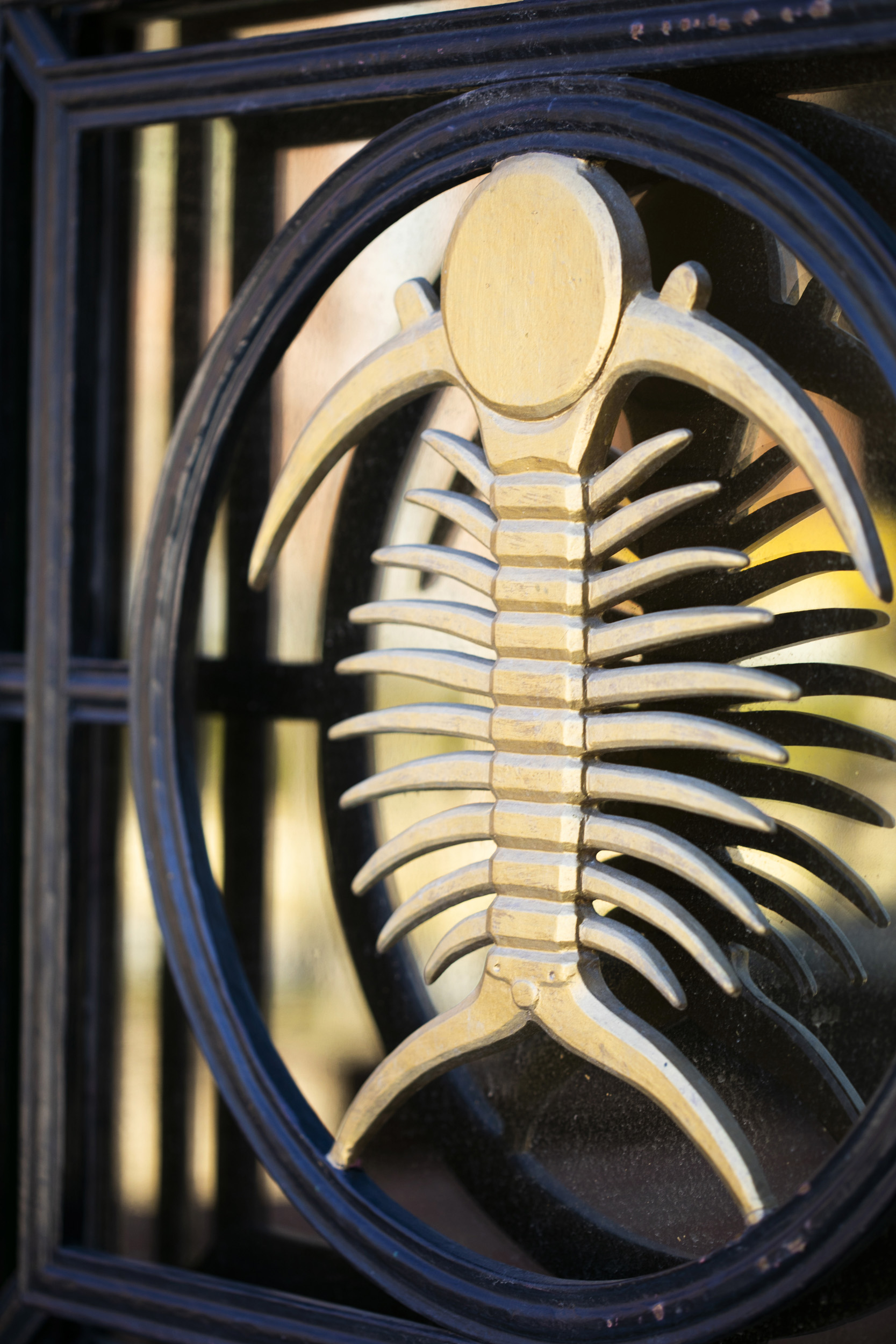

On the three doors to the Bio Labs, 24 organisms, insects, and fauna from sea, air, and land, including this trilobite and jellyfish, are magnified in bronze. Katharine Ward Lane Weems worked with scientists and craftsmen to design this celebration of the natural world.
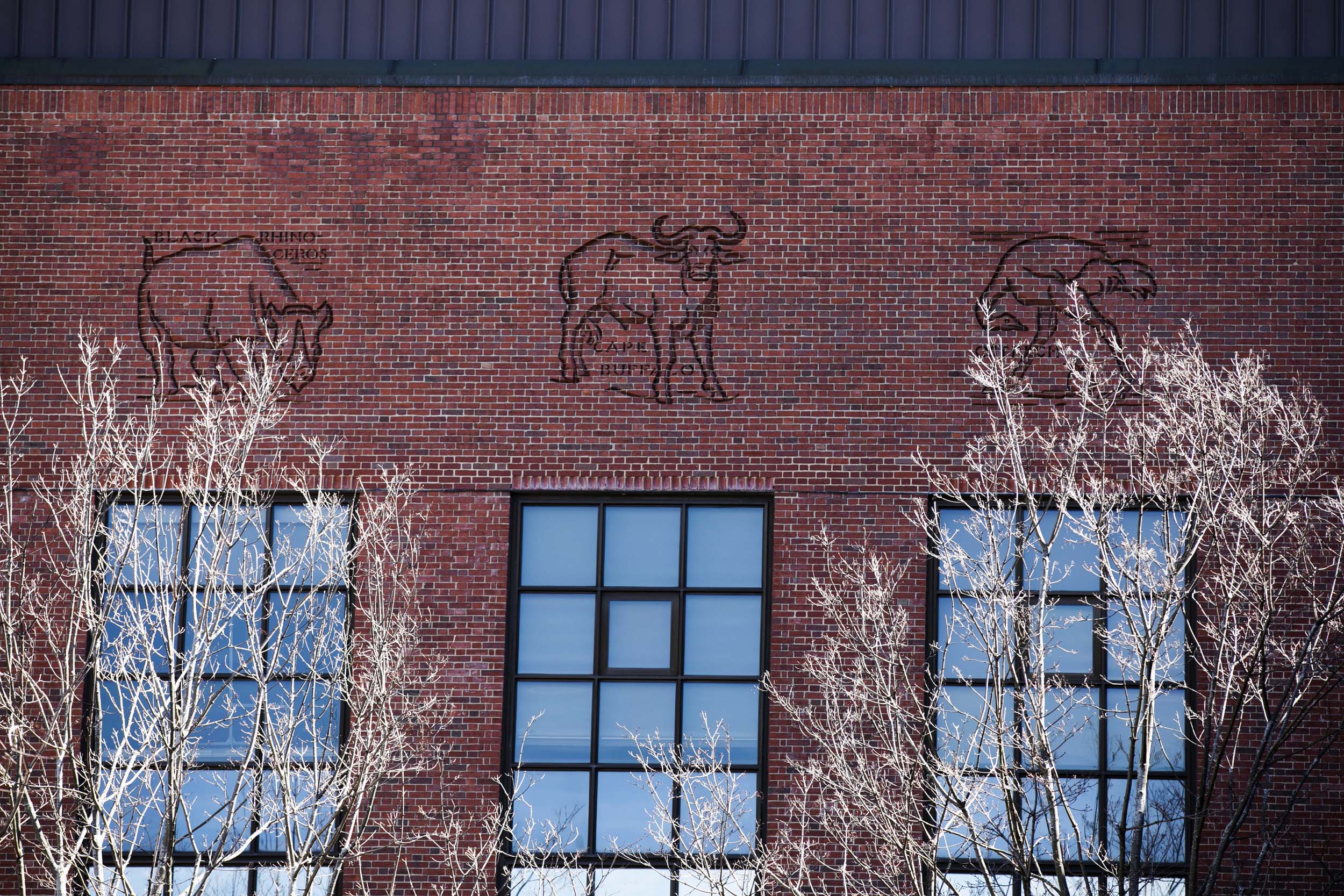
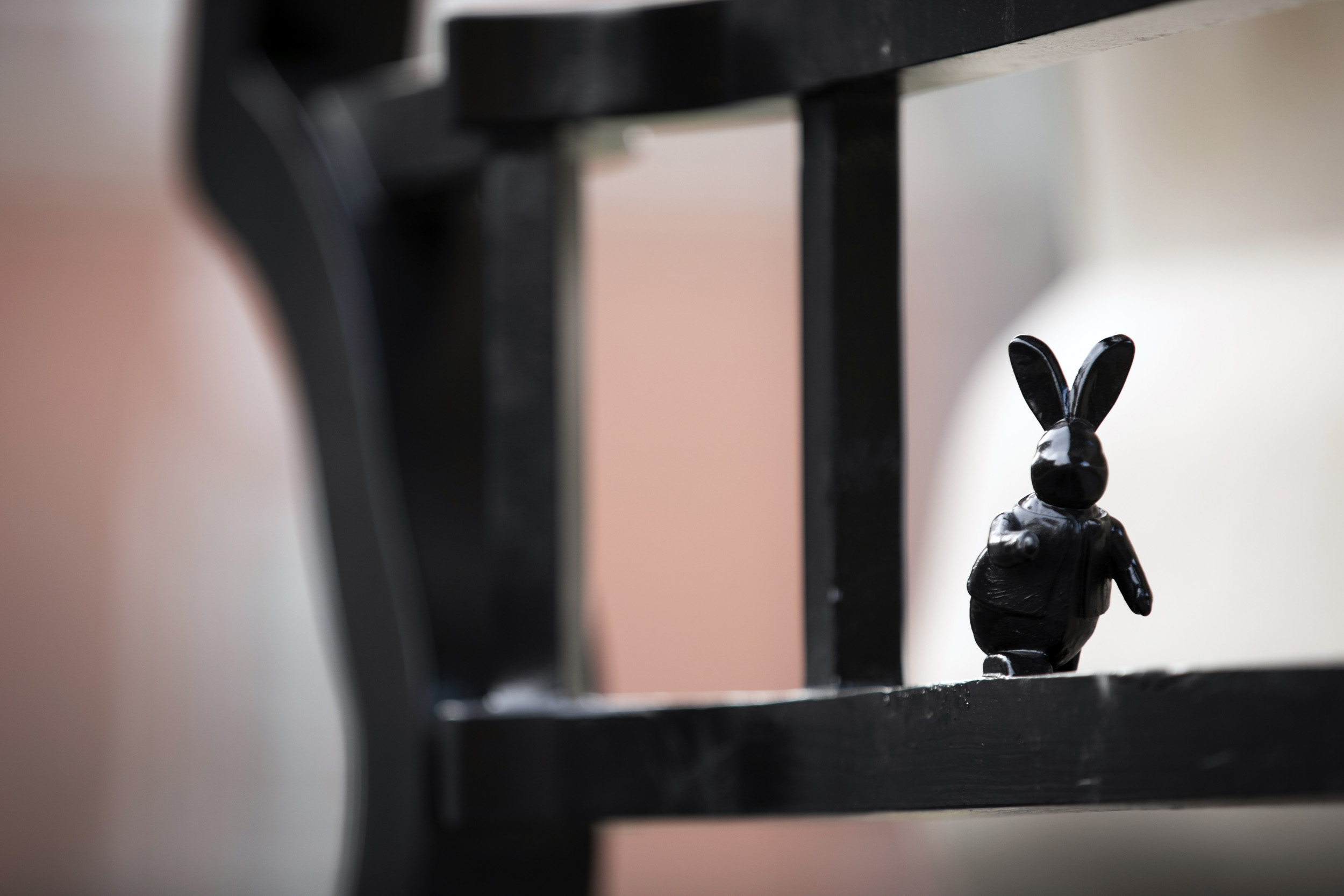

The White Rabbit and Cheshire Cat perch on the newly designed gate near Houghton Library along Quincy Street. The Peter J. Solomon Gate took its inspiration from the first edition of “Alice’s Adventures in Wonderland.”

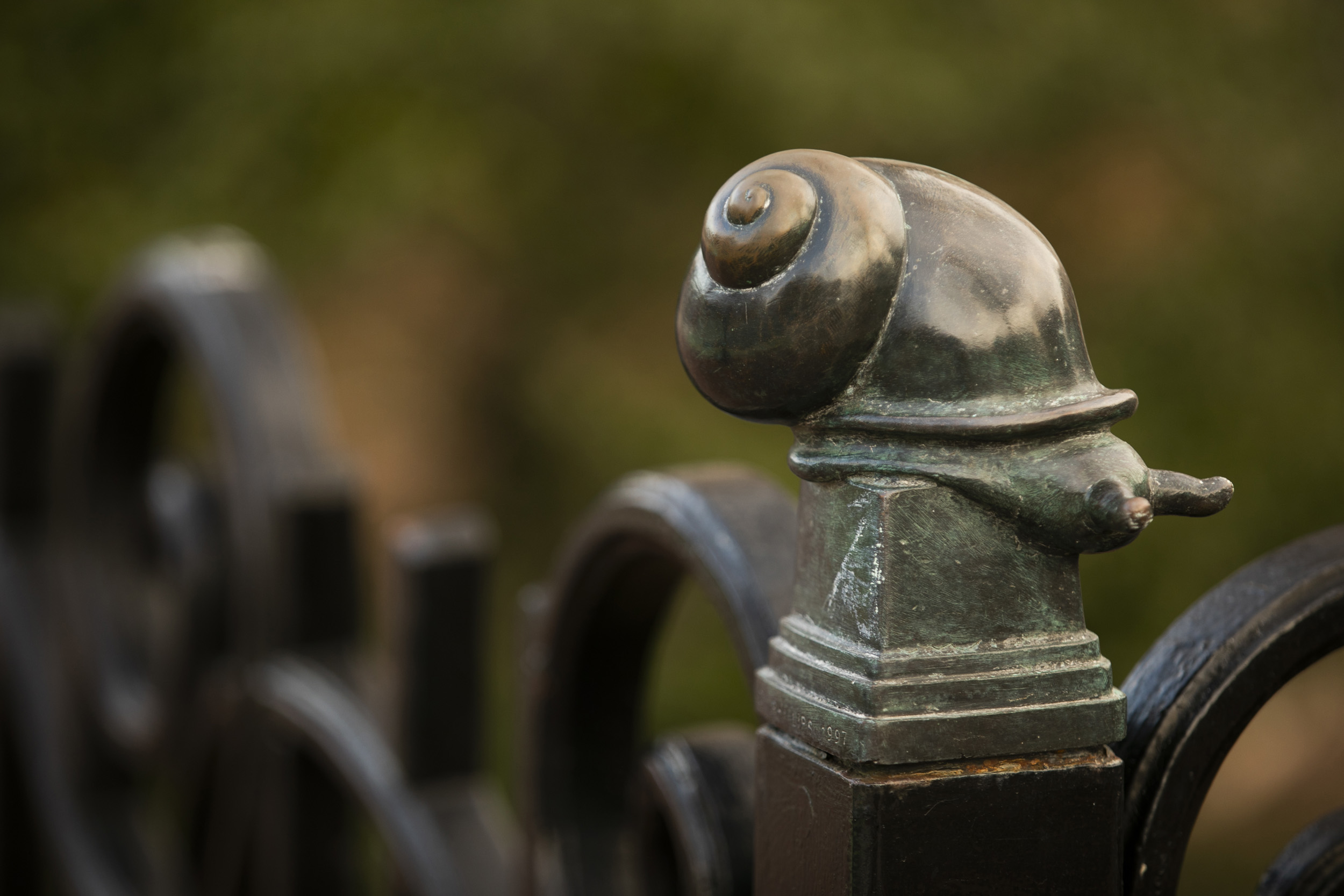
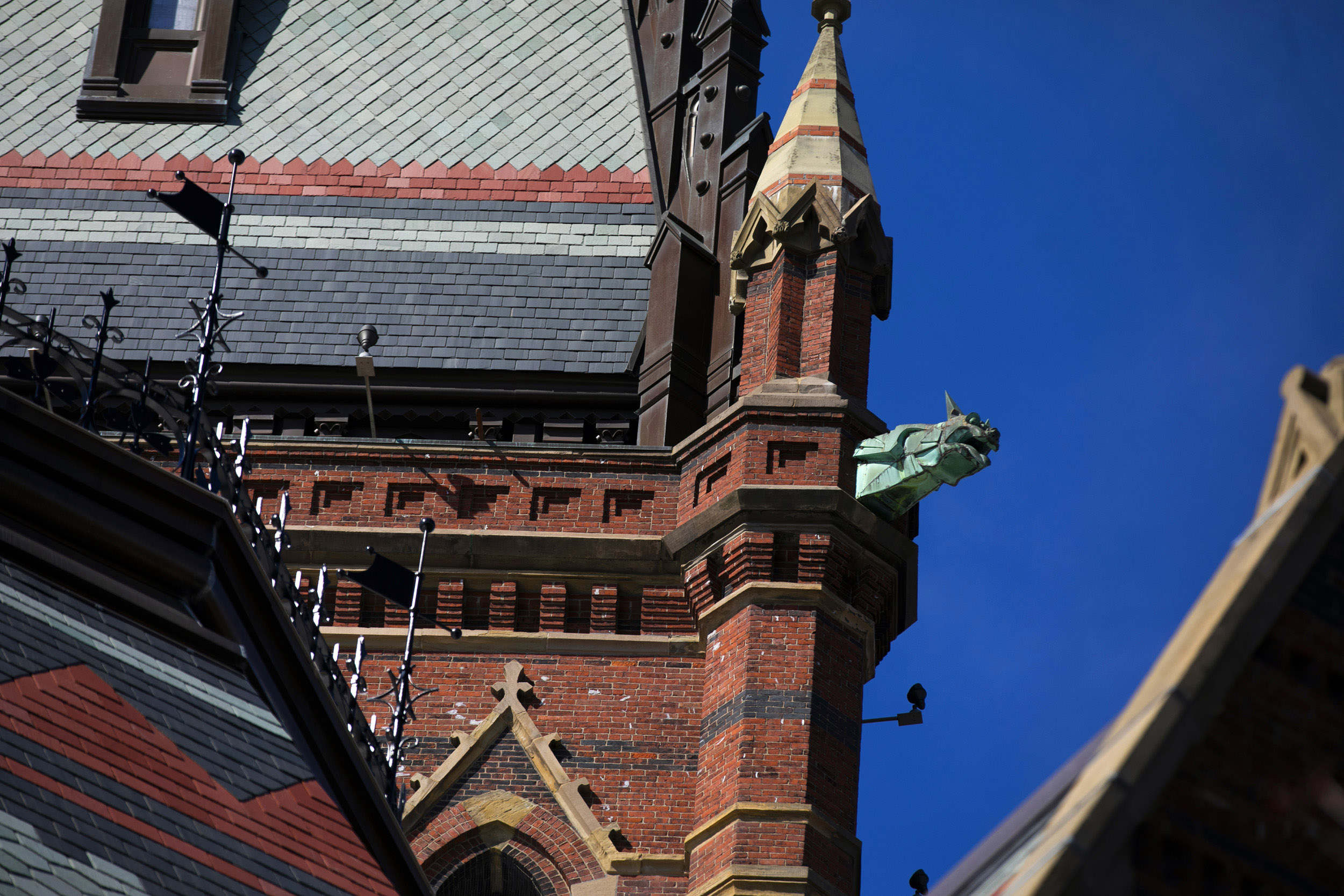

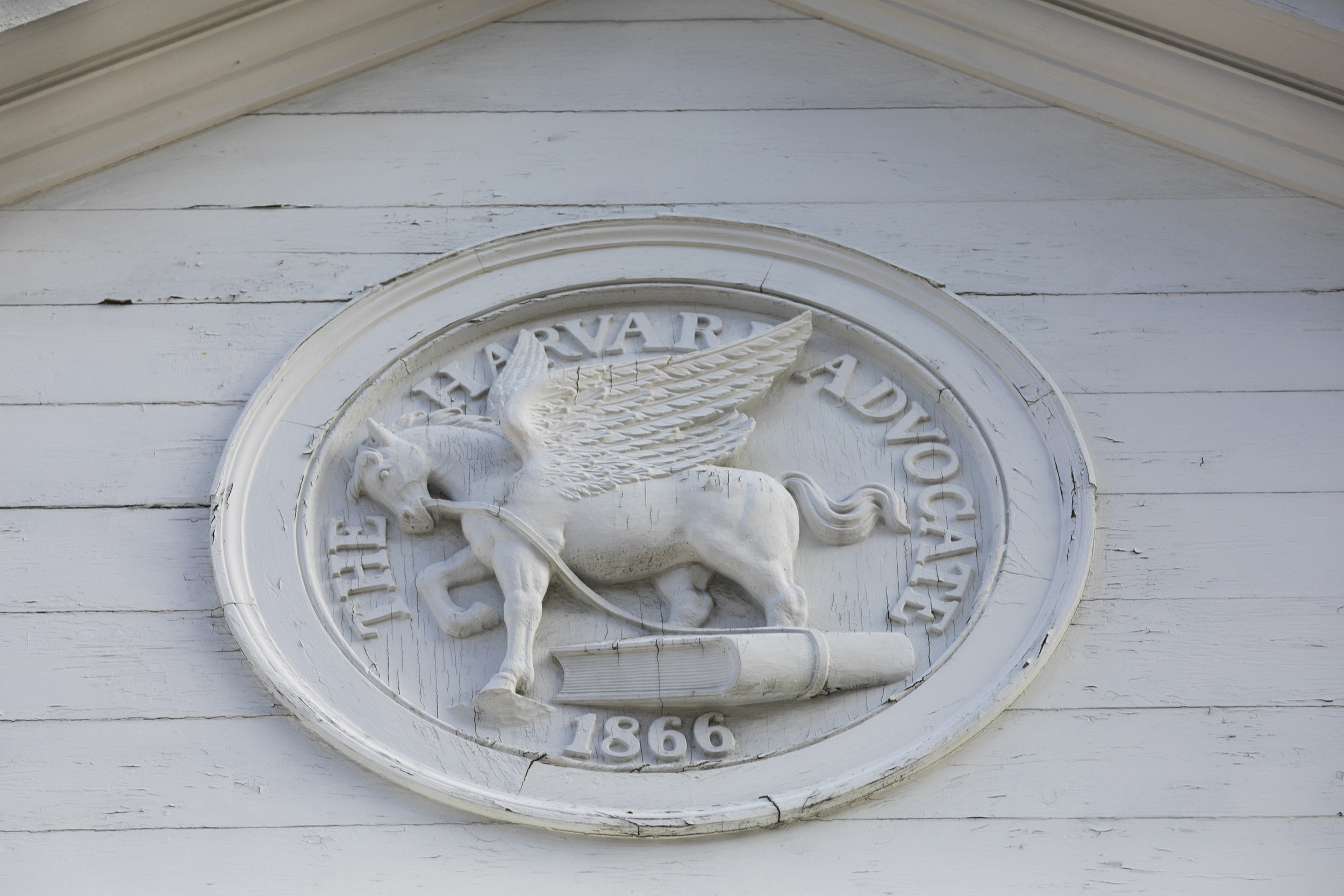
A blue horse head tops the gate to Dunster House. A Pegasus lugs a literary tome on the pediment of the Harvard Advocate building on South Street. Since its founding in 1886, the winged horse has been the symbol of the literary magazine, the oldest continuously published college art and literary magazine.
